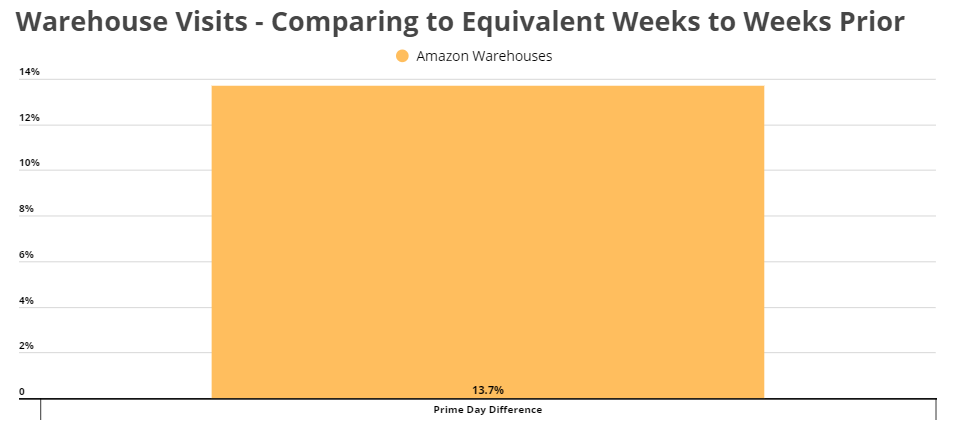
Prime Day had yet another huge year in 2021, but while the eCommerce success is almost a given, the offline effects were certainly in question this year. In recent years, Amazon’s Prime Day has had a significant impact on offline retail, with competitors like Best Buy, Walmart and Target driving strong results in July 2019 and even seeing a bump in October 2020.
We dove into these competitors, Whole Foods, and even Amazon warehouses to see how 2021’s Prime Day impact was felt in physical retail.
The Benefits Continue
In recent years, key offline Amazon competitors like Target, Best Buy and Walmart have all gotten into the Prime Day mix. And while Prime Day 2020’s offline impact was expectedly limited by the pandemic, a boost was still seen. In 2021, however, it looks like the strategy paid real dividends. Walmart, Target and Best Buy saw visits up 21.7%, 32.3% and 10.3% respectively when compared to 2020’s October Prime Day iteration. Even when comparing to the July affair in 2019, visits were down only 0.1% and 1.2% for Walmart and Best Buy, while Target actually saw an impressive 12.1% jump.

But perhaps the comparison to the equivalent days in previous years is more relevant than the comparison to previous Prime Days. All three brands not only (expectedly) saw huge jumps compared to the equivalent Monday and Tuesday in June 2020, but also saw significant visit growth when compared to the equivalent days in June 2019. Walmart saw visits up 1.3% compared to the equivalent Monday and Tuesday in 2019, while Target and Best Buy saw increases of 18.2% and 11.3%, respectively.
Critically, these are bumps on random weekdays driven by a retail ‘holiday’ created by a competitor. The success will likely only deepen the approach, pushing more brands to take part and driving top players like Walmart, Target, and Best Buy to look even more broadly at how they leverage Prime Day and other seemingly disconnected retail ‘holidays’.

The Amazon Effect
Yet, the most important offline player in Prime Day is still Amazon. Looking at visits to Whole Foods on Prime Day compared to the ‘holiday’ in 2019 and 2020 saw the grocery brand’s visits up 19.7% year over year, but still down 17.9% when compared to 2019. Some of this centers around the ongoing challenges that Whole Foods has faced in the pandemic environment. But the brand may not have been utilized as effectively as during past Prime Days, with deals like the infamous $10-for-$10 not on the agenda this year.
The brand was experiencing a more organic recovery with visits down 9.0% the week beginning June 14th when compared to the equivalent week in 2019 – the grocer’s best showing since the start of 2021.

An equally important piece of the Amazon puzzle can be gleaned when looking at visits to key distribution centers. Visits to Amazon centers were down year over year, but up 32.4% when compared to 2019 and 13.7% when compared to the prior three Mondays and Tuesdays.
And this could be the best sign of all for Amazon. After seeing eCommerce skyrocket with the onset of the pandemic, Amazon was unable to effectively handle the increased demand. While it’s easy to understand its inability to predict a global pandemic, the company clearly shifted priorities to make sure it was well positioned to account for future surges. The decline from last year speaks also to the October Prime Day date in 2020 that more closely coincided with the holiday season, and a greater degree of readiness by Amazon to handle the bump. Visits to distribution centers were up 13.7% compared to the previous three Mondays and Tuesdays – showing Amazon’s ability to effectively adapt operational resources to account for demand peaks.

To learn more about the data behind this article and what Placer has to offer, visit https://www.placer.ai/.







Sign up to receive our stories in your inbox.
Data is changing the speed of business. Investors, Corporations, and Governments are buying new, differentiated data to gain visibility make better decisions. Don't fall behind. Let us help.













Sign up to receive our stories in your inbox.
Data is changing the speed of business. Investors, Corporations, and Governments are buying new, differentiated data to gain visibility make better decisions. Don't fall behind. Let us help.





